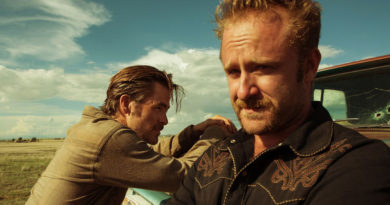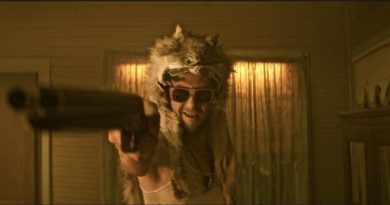A Brief History of ‘A Christmas Carol’
A Christmas Carol, Charles Dickens’ classic tale, has been done numerous times on stage, on television and on film, so it’s natural that fans will fall into differing camps. Some like musical versions while others like the straightforward horror-tinged versions.
There have been female Scrooges, African American Scrooges, comic Scrooges — even Mister Magoo took a stab at portraying the old miser. It’s a timeless story whose construction is simple…it’s all a matter of execution, and that’s where talent both in front of and behind the camera really counts.
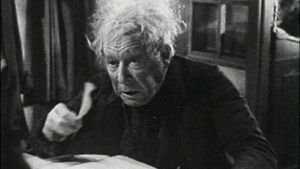
Film productions of the tale date back to as early as 1901, and one performer, British actor Seymour Hicks, portrayed Scrooge twice in 1913 and 1935. I’ve seen the 1935 version. It’s a primitive if interesting curio, with 64-year-old Hicks making a good older Scrooge but not terribly convincing in flashbacks when he must portray a much younger man.
Also, only the Ghost of Christmas Present appears fully onscreen, with the rest represented by indiscernible shapes, pointing fingers and disembodied voices. The filmmakers must have recently discovered the joy of sound editing, too, as the film has an annoying, nonstop musical score. Also, this is one of only two sound versions that shows the dead body of Tiny Tim!
The MGM factory took a stab at the story in 1938, with Reginald Owen as the miser. It’s too sweet for me; a lot of the grimmer aspects of the story were eliminated, in keeping with the family friendly fare the studio was producing at the time. There are no wailing phantoms, the Ghost of Christmas Past is played by a pretty young woman, and the romance between his nephew Fred and fiance Elizabeth was greatly expanded in a way that Dickens never intended. And Owen just doesn’t have the presence to make a truly menacing Scrooge. Humbug, indeed!
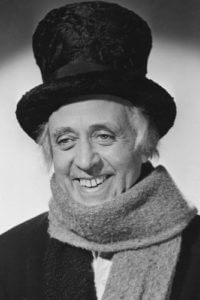
The 1951 English version started airing seasonally on American television in 1970 and quickly became the favorite. It’s clear to see why: Alastair Sim is an absolutely perfect Scrooge. When the film begins, he is grim, humorless and absolutely incapable of expressing human warmth or emotion. As the spirits visit him, he gradually remembers the way he used to be and realizes that his time for redemption is running out. He becomes more exuberant — even childlike — as the feelings long dormant in his old carcass are awakened once more. It’s a marvelous performance, and Sim is supported by a splendid cast of English character stalwarts.
Though produced on a modest budget by tiny Renown Pictures (which is still in existence as a distributor), the sets and art direction are wonderful, the special effects are terrific and it doesn’t cop out on the creepiness. I mean, this is essentially a horror story, after all! Sim and Michael Hordern, who portrays Marley’s ghost, lent their voices to an animated TV adaptation 20 years later.
When I worked for Four Star International in Hollywood, we had a library of Renown films, and this was our crown jewel — a guaranteed annuity for us every Christmas season. But our beat-up old 16mm prints didn’t look as good as this one you can watch for free:
Another English version is the 1970 musical Scrooge, which I recall first seeing at a kiddie matinee when I was a kiddie. It’s one of those films that people said “meh” to when originally released, but it has grown in stature through the years. Mounted lavishly in the style of the 1968 smash Oliver!, it features 34-year-old, Golden Globe-winning Albert Finney very convincingly portraying Scrooge through the ages. As a matter of fact, when you finally see him in flashback during the Christmas Past sequences, you’re shocked to see just how young he really is.
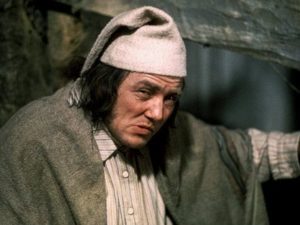
Alec Guinness plays Marley’s Ghost, and it’s obvious that he’s having a blast with the role. His performance is off-kilter, pantomime-style and a lot of fun. When Scrooge is sent to hell during the Christmas Yet to Come segment, he asks where they are and Guinness deadpans, “I should have thought it would be obvious.” And “I’m sorry your chain isn’t ready yet. They had to put on extra demons to finish it.”
Most importantly, the musical numbers are decent, and anyone who doesn’t shed a tear during Tiny Tim’s rendition of “The Beautiful Day” and the “Happiness” sequence with spurned fiancee Isabel is as hard-hearted as Scrooge himself.
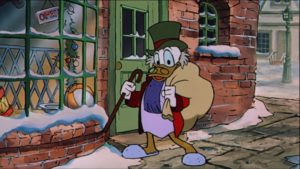
I have a print of the 25-minute Mickey’s Christmas Carol on super 8mm and I have to admit it’s a charmer. The filmmakers had the dual challenge of telescoping the story into under half an hour while still inserting as many familiar Disney characters as possible, and they succeed admirably. Scrooge McDuck plays the miser, of course, with Mickey portraying Bob Cratchit.
Among the other familiar characters are Minnie as Mrs. Scrooge, Donald Duck as Scrooge’s nephew, Jiminy Cricket as the Ghost of Christmas Past and many other recognizable characters. It’s actually funny without being cloying, and it looks great, with wonderfully lush animation and vivid colors. And it was the first Mickey Mouse cartoon made in 30 years at the time, presented on a double bill with a re-release of The Rescuers for the 1983 holiday season.
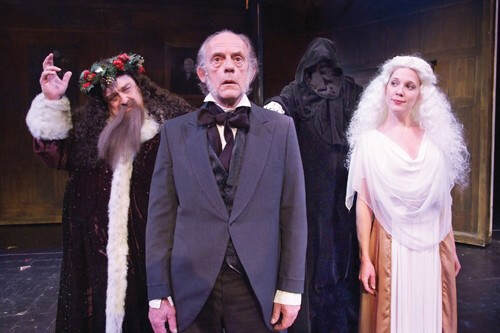
In January 2009. I saw a stage production starring Christopher Lloyd, John Goodman and Jane Leeves at the Kodak Theater in Hollywood. You’d think it’d be a dream, but what a train wreck! A huge set overpowered the stage, dwarfing the performers, and frequent scene changes required much hilarious and loud moving around of backdrops and awkward pauses.
The music cues seemed to grab whatever was handy, including a ballad from the Charles Laughton-directed classic Night of the Hunter! The actors seemed confused by the constantly flying scenery, resulting in some flubbed lines and unsure performances. And evidently producer Kevin Von Feldt was sort of a modern-day David Friedman, stiffing famous-name actors and hustling audiences.
I really have no interest in the Zemeckis-directed version with Jim Carrey. I really hated The Polar Express, Zemeckis’ previous holiday movie with Tom Hanks. Unless the technology has vastly improved since then, the characters probably all have dead fish eyes and weird mouths that look like they’re wearing ill-fitting dentures. And I actually found myself in the theater struggling not to scream “SHUT UP!” at Tom Hanks. Who could yell at Tom Hanks?
I have yet to catch the 1984 George C. Scott TV version, however. He makes a great Scrooge, I’m sure. And it’s the other adaptation where they show Tiny Tim…dead!
Still, you can’t lose with a double-feature of the Sim version followed by the Finney musical. They make a nice counterpoint to each other: one black and white, one color; one musical, one straight drama. Most importantly, they both dish out the supernatural elements inherent in Dickens’ original tale.
Merry Christmas!


